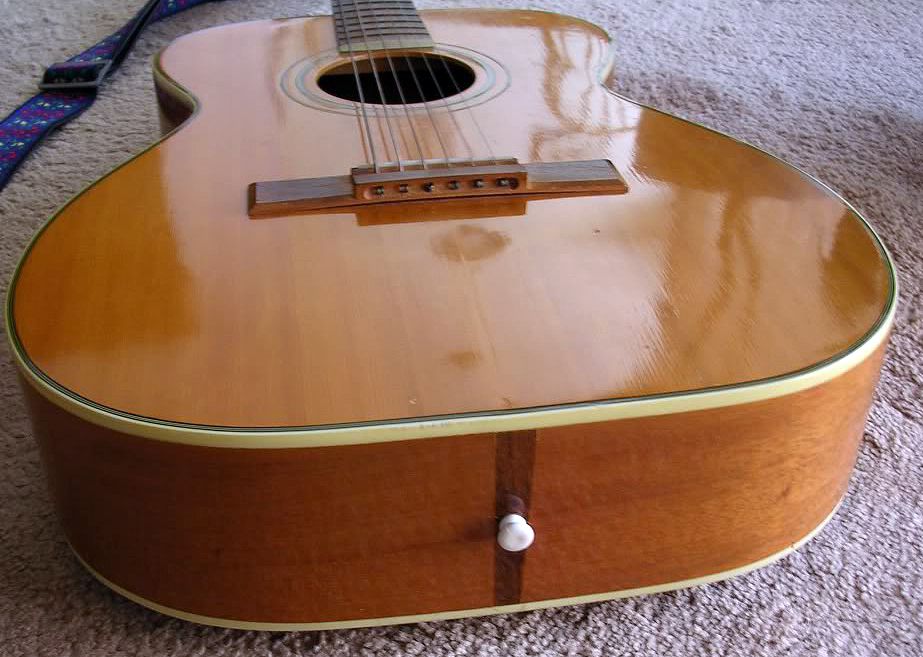I was just reading about George Lowden's pinless bridge. It seems to me that any pinless bridge would put a lot of stress on the top. With a pinned bridge, the ball locks under the bridge plate which takes the stess. Although, I suppose if the glue holds and the top doesn't splinter off, the entire sandwich of bridge, top and bridge plate may be just as strong. I'd be interested in any comments.
Views: 1982
Replies to This Discussion
-
One of my least-favorite guitars to work on are Ovations (which, in karma-ville, is probably why I end-up with lots of them walking through the door)... but they've used pinless bridges for years and seem to have no higher or lower bridge failure rate than anything else. If memory serves, even their pinless bridges have a bridgeplate underneath to help spread the stress.
-
Harmony used pinless bridges for decades. Besides the parallel, uncompensated saddle, their other drawback was that the bridge stayed put solely because the hide glue joint held. And often the glue gave out, like this:
 This meant the bridge often flew, and as Frank says, occasionally took some top with it.
This meant the bridge often flew, and as Frank says, occasionally took some top with it.In a conventional pin bridge, it's really the bridge plate that's doing the work. The string balls lodge against and pull on the plate, not the bridge itself, therefore the glue joint under the bridge has much less work to do, and the bridge tends to stay put better. Or at least do less damage when and if it ever does pull.
I agree the "tonal advantage" of one style of bridge over the other is very iffy.
-
The pinless bridge design can work very well, and thousands of instruments have been made with them. And, as far as I know the only problem is when something goes awry. As usual, I'm unwilling to offer an opinion as to whether one style or another contributes appreciably to tone or volume.
Sometimes a pinless bridge comes loose, and tears a goodly section of the top in front of it when it goes because the pinless bridge is free to fly off altogether. A pin bridge can't do that, because, as you point out, the string balls anchor underneath at the bridge plate.
Break a string on a pinless bridge, and you can wind up with a severe scar behind it as the ball goes shooting back. Classical guitar bridges are pinless, and there are legions of those instruments with broken string scars - even a nylon string can gouge a top. On instruments with both a pinless bridge and a delicate finish, it's easy to achieve that scar in the process of restringing. Some makers even supply guards to help prevent that.
Any number of inexpensive guitars had pinless bridges because they reduce assembly and setup time, although there are also a number of fine makers who use them for other reasons, such as visual appeal or perceived tonal advantage.
-
The overall stresses on the top are the same.
The difference is how the glueline is loaded.
On a pinned bridge the glueline mainly has to accommodate a shear load from the bridge attempting to slide forward.
On a pinless bridge there is an additional uplift force to be resisted by the glueline, hence the more catastrophic failure mode which Frank refers to.
Obviously there are plenty of pinless bridges which survive as do most classical bridges unless you add steel strings, but it is an inherently weaker design.
Many makers using pinless bridges have a bigger footprint to compensate or are braced more stiffly under the bridge.to avoid deformation and prying forces on the glueline at ther back of the bridge.
-
One thing to remember is to leave space between the area where the string anchors and the saddle for the portion of the string that is at the ball end with extra wrappings. I recently saw an otherwise well made guitar where that point was missed.The result was, the uneven portion close to the ball end resting squarely on the saddle. Intonation out the window.
Best
© 2025 Created by Frank Ford.
Powered by
![]()